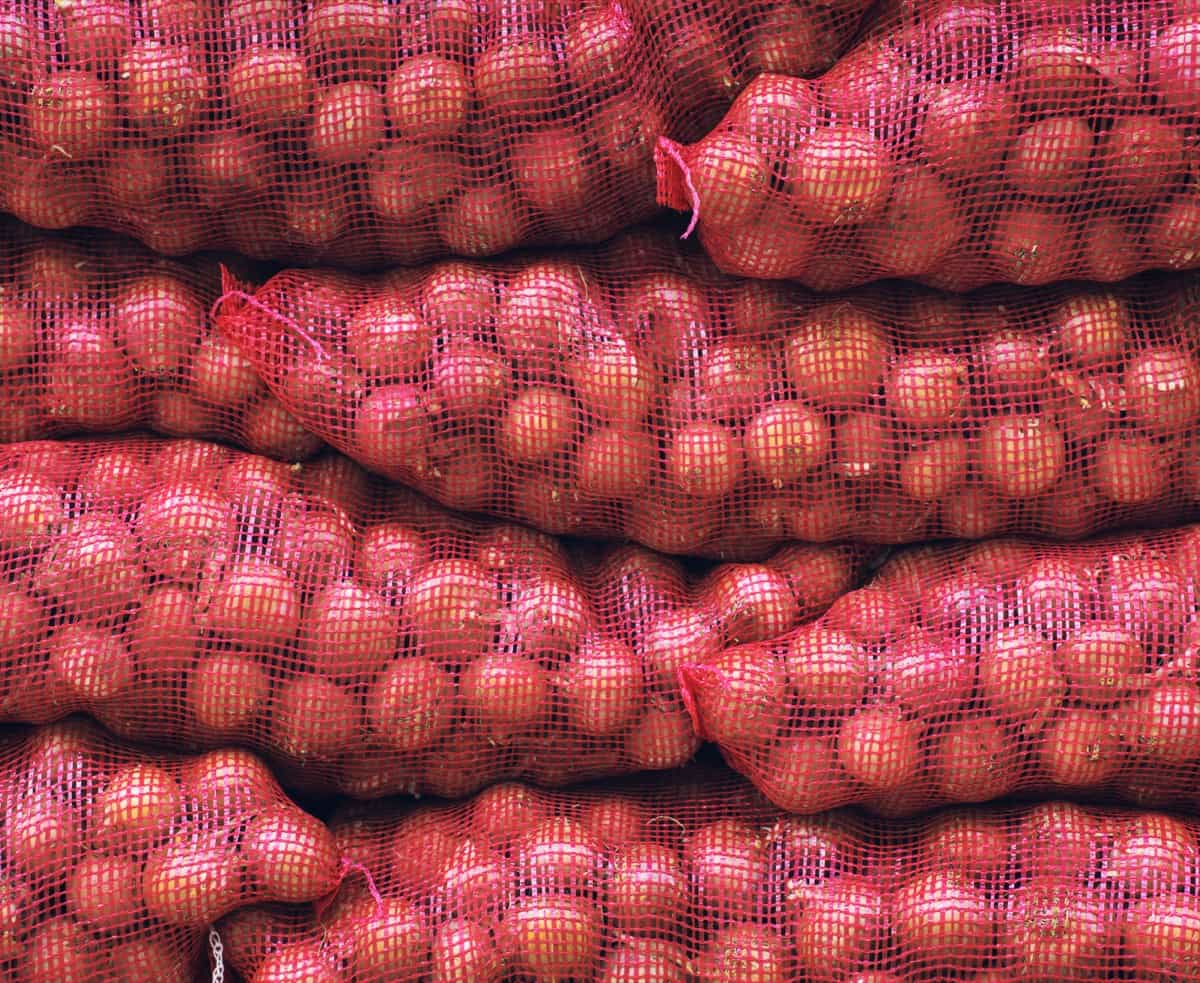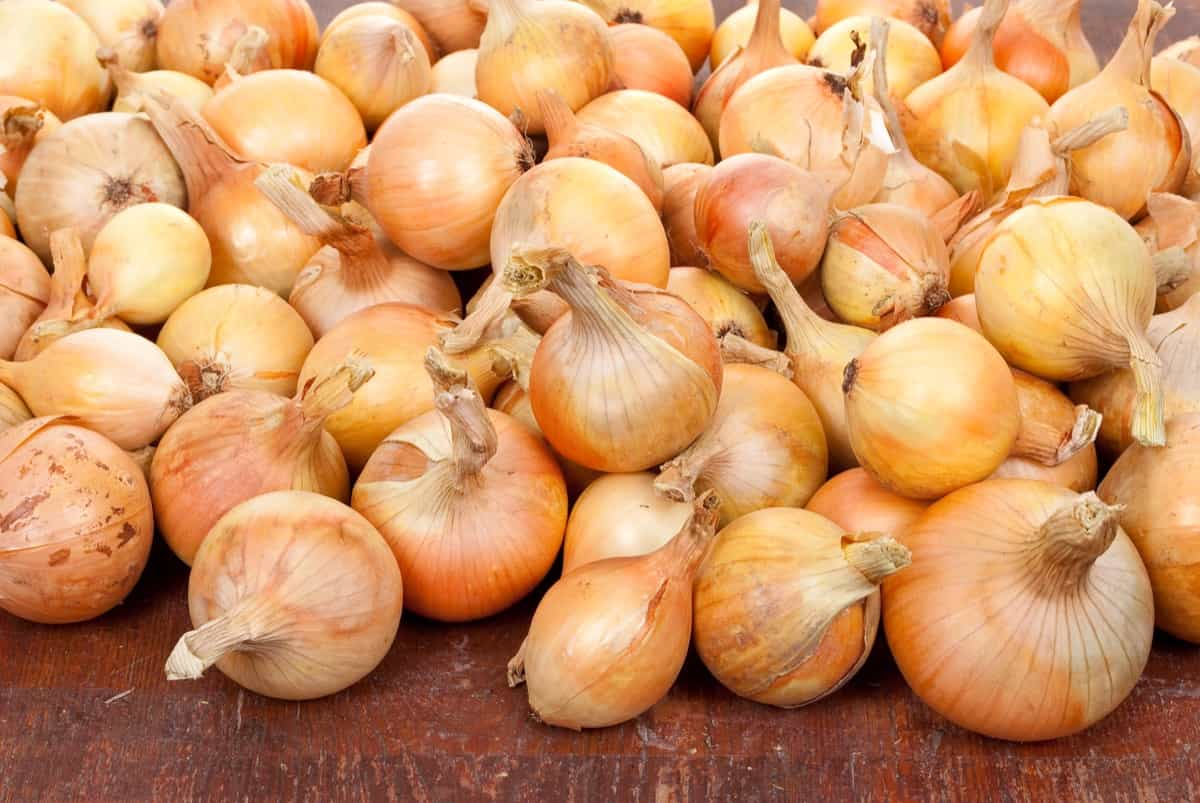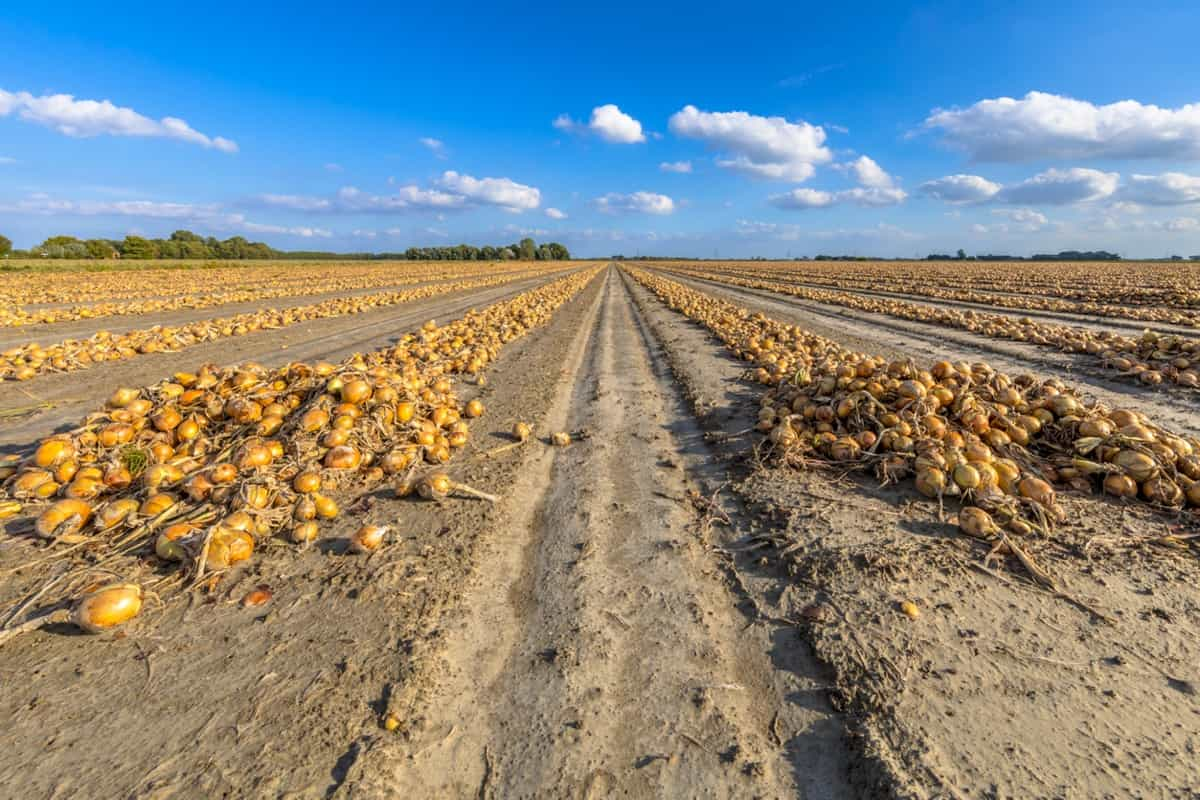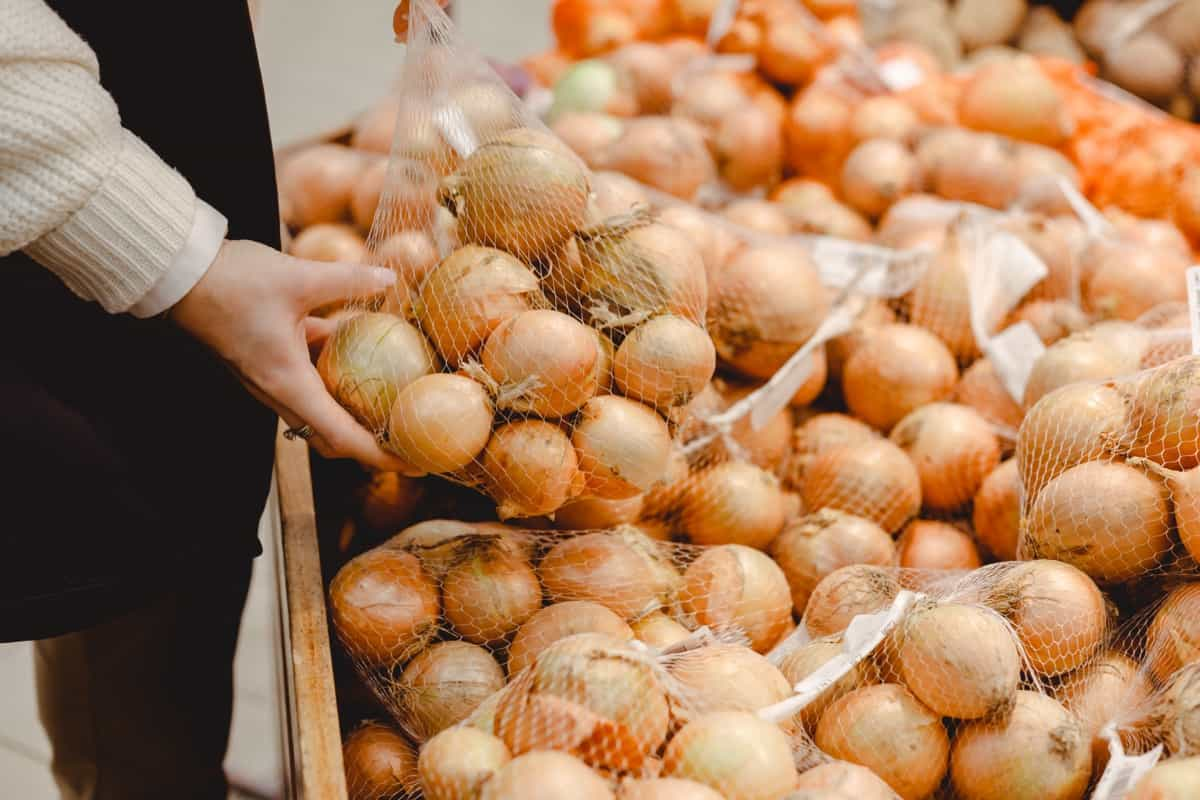Onion prices worry both consumers and policymakers. The cost of onions can change a lot and affect how much all food costs. Now, just like tomatoes, onion prices might go up. Lately, it seems like onion prices could increase soon. This article will look at why this might happen, talk about ways to fix it, and show what the government is doing about it.

Onion Prices Likely to Rise in the Near Future
Reasons for the Potential Rise in Onion Prices
Bad weather and crop problems: A big reason onion prices might go up is when crops fail because of things like floods, droughts, or unexpected rain. Onions are easily affected by the weather, and when something bad happens, it can make fewer onions. When there are fewer onions to buy, the prices can go higher. This year, there have been heavy rains and floods in North India, and the problems started with onion crops.
Problems with keeping and moving onions: Onions can spoil easily, so they need good storage and transport. If there isn’t enough cold storage and good ways to move them, some onions might get bad after they’re harvested. When this happens, there are fewer onions to sell, and the prices can go up and down a lot.
Limits on sending onions abroad: In some places, they stop or limit sending onions to other countries so that there are enough for people at home and the prices stay stable. When big onion-producing countries do this, there aren’t as many onions available worldwide, so prices can go up everywhere.
Market speculation: Sometimes, people make guesses about what might happen with onion demand and supply. These guesses can make onion prices go up even if it’s not because of real reasons. Traders and investors are often behind these guesses, and they can push onion prices higher artificially.
Demand changes with the seasons: People eat more onions at different times of the year, like during festivals or in the winter when they use them a lot in cooking. When lots of people want onions at these times, it can make the prices go up because everyone is trying to buy them.
Best Solutions to Address Rising Onion Prices
Helping farmers with better farming: To make more onions and have fewer problems with crops, it’s important to teach farmers new and better farming methods. This means giving them good seeds, showing them how to water their fields properly, and teaching them how to deal with pests and diseases.
Building good infrastructure: To keep onions from spoiling and ensure enough in the market, it’s important to have strong storage and transportation systems. Governments should spend money on cold storage places, refrigerated trucks, and better packaging methods. This way, onions can stay fresh longer and be available when needed.
In case you missed it: From Fields to Algorithms: Top 10 AI-Based Agriculture Startups

Encouraging Different Crops: If farmers only grow onions to make money, it can make onion prices go up and down a lot. It’s better to tell farmers to grow different kinds of crops too. This way, they won’t rely too much on onions, and when onion prices change, it won’t be a big problem. Offering help and rewards for growing other crops can make prices steadier.
Getting better market information: To make good policies, it’s important to have the right information about how many onions are being produced, how many people want them, and what the prices are like. Governments should create strong systems to collect and share this information quickly. This way, policymakers can make smart choices based on real-time data.
What Initiatives Should be Taken by Government to Address Rising Onion Prices
Keeping prices steady: Sometimes, governments step in to control onion prices. They do this by controlling what comes in and goes out of the country, limiting how much traders can store, or using extra onion supplies to even out the prices when they get too jumpy.
Helping farmers with subsidies: Governments can give farmers money to encourage them to use better farming methods, buy equipment, or improve storage places. This is to make farming more efficient, prevent onions from going bad, and ensure onion prices don’t change too much.
Investing in onion research: Governments can spend money on research in the onion industry to create onions that grow more, find better ways to store them and control pests and diseases. This research can lead to new ideas that make more onions and stop prices from changing a lot.
To sum it up, many things can make onion prices go up, like bad crops, storage problems, limits on exports, guessing in the market, and changing demand throughout the year. To solve this, it’s important to do things like farm better, build good storage and transport systems, encourage farmers to grow different crops, and have good information about the market.
In case you missed it: Onion Companion Plants: What to Grow and What Not to Grow with Onion Plants

Governments can also help by controlling prices, giving farmers subsidies, and supporting research, encouraging more cold storage facilities. These actions can help stop onion prices from going up too much.
Best Onion Varieties for High Yields in India
Nasik Red: Nasik Red is a popular onion grown in Maharashtra’s Nasik region. It’s known for its deep red color and strong taste. These onions need 12-14 hours of daylight for proper growth and can be cultivated in both monsoon and winter.
Pusa Red: Pusa Red is a productive onion developed by the Indian Agricultural Research Institute. They are bright red and have a mild flavor. To grow well, Pusa Red onions need 10-12 hours of daylight and are suitable for the rabi season in northern India.
Bellary Onion: Bellary Onion is a well-liked variety from Karnataka’s Bellary district. They are light red and have a mild taste. These onions require 11-13 hours of daylight and can be cultivated in both monsoon and winter.
Agri Found Dark Red: Another high-yielding onion variety from the Indian Agricultural Research Institute, Agri Found Dark Red onions are dark red with a pungent taste. They need 10-12 hours of daylight and are suitable for the rabi season in northern India.
Arka Kalyan: Arka Kalyan is a hybrid onion variety developed by the Indian Institute of Horticultural Research. They have a light red color and mild flavor, requiring 10-12 hours of daylight. These onions are suitable for cultivation in the southern states during the rabi season.
Pusa Madhavi: Pusa Madhavi is another high-yielding onion from the Indian Agricultural Research Institute. They are light red and mild in taste, needing 10-12 hours of daylight for proper growth. These onions are suitable for the rabi season in northern India.
In case you missed it: Best Fertilizer for Potted Onions: Organic, Natural, Homemade, NPK Ratio, When and How to Apply

10 Best Tips for Successful Onion Farming
- Choose the right onion variety: You must choose a suitable onion variety for your local climate.
- Plant at the Right Time: This is important for more onion yields.
- Use proper watering techniques: This plays a major role in achieving high onion yields. Usually, Drip irrigation is the best choice for Onion farmers.
- Plant then where adequate sunlight is received: Needs to provide a minimum of 8 to 10 hours of sunlight to your onion plants.
- Control pests and diseases: Timly monitoring pests and diseases in onion crops is mandatory to reduce the risk.
- Thin onion sets: for healthy growth and to prevent overcrowding, you must thin the onion sets.
- Harvest at the right time: You must harvest onions at the right time for more shelf life. It is easy to find harvesting time when the tops of the plants begin to yellow and fall over.
- Cure and store onions properly: To increase the Onion shelf life, dry them in a cool place, avoiding direct sunlight.
- Feed Your Flock for Less: Top 10 Tips to Save on Chicken Feed
- Ultimate Guide to Ossabaw Island Hog: Breeding, Raising, Diet, and Care
- Hatching Answers: The Top 10 Reasons Your Chickens Aren’t Laying Eggs
- Eggs and Economics: Breaking Down the Cost of Raising Backyard Chickens
- Defend Your Greens: Proven Methods to Keep Iguanas Out of Your Garden
- Ultimate Guide to Cinnamon Queen Chicken: A Comprehensive Guide for Beginners
- Ultimate Guide to California Tan Chicken: Breeding, Raising, Diet, Egg-Production and Care
- Ultimate Guide to Marsh Daisy Chicken: Breeding, Raising, Diet, and Care
- 10 Types of Chicken Farming Businesses You Can Start for Profits